Tiras-al-Hobb
طرص الحبّ
Creating palimpsests with different layers as a testimony for queer Arabs.
September 2023
Mixed Media
The homosexual and Arab identities, when put next to each other, almost sound like an oxymoron – they cannot coexist. That is the belief of the vast majority of the Arab population.
Lebanon is often perceived as more open-minded and accepting towards the LGBT+ community compared to some of its neighbouring Arab countries. This relative openness can be attributed, in part, to historical factors such as the French Mandate's influence on the country's legal and cultural framework. The legacy of the French Mandate, which governed Lebanon from the aftermath of World War I until its independence in 1943, left a lasting imprint on Lebanon's legal system and social norms. Additionally, the country experienced a "Golden Age'' in the 1960s when Beirut was often referred to as the "Paris of the Middle East." During this period, the city embraced a more liberal and cosmopolitan atmosphere, contributing to greater tolerance and acceptance of diverse lifestyles, including those of the LGBT+ community.
However, during this past year, amid incitement to violence by Hezbollah’s leader, draft laws proposed to criminalize homosexuality, and menacing threats from the “Soldiers of God,” Lebanon’s LGBTQ+ community finds itself caught in an intense hate campaign and demonization of the LGBTQ+ community driven by political motives.
Lebanon is often perceived as more open-minded and accepting towards the LGBT+ community compared to some of its neighbouring Arab countries. This relative openness can be attributed, in part, to historical factors such as the French Mandate's influence on the country's legal and cultural framework. The legacy of the French Mandate, which governed Lebanon from the aftermath of World War I until its independence in 1943, left a lasting imprint on Lebanon's legal system and social norms. Additionally, the country experienced a "Golden Age'' in the 1960s when Beirut was often referred to as the "Paris of the Middle East." During this period, the city embraced a more liberal and cosmopolitan atmosphere, contributing to greater tolerance and acceptance of diverse lifestyles, including those of the LGBT+ community.
However, during this past year, amid incitement to violence by Hezbollah’s leader, draft laws proposed to criminalize homosexuality, and menacing threats from the “Soldiers of God,” Lebanon’s LGBTQ+ community finds itself caught in an intense hate campaign and demonization of the LGBTQ+ community driven by political motives.




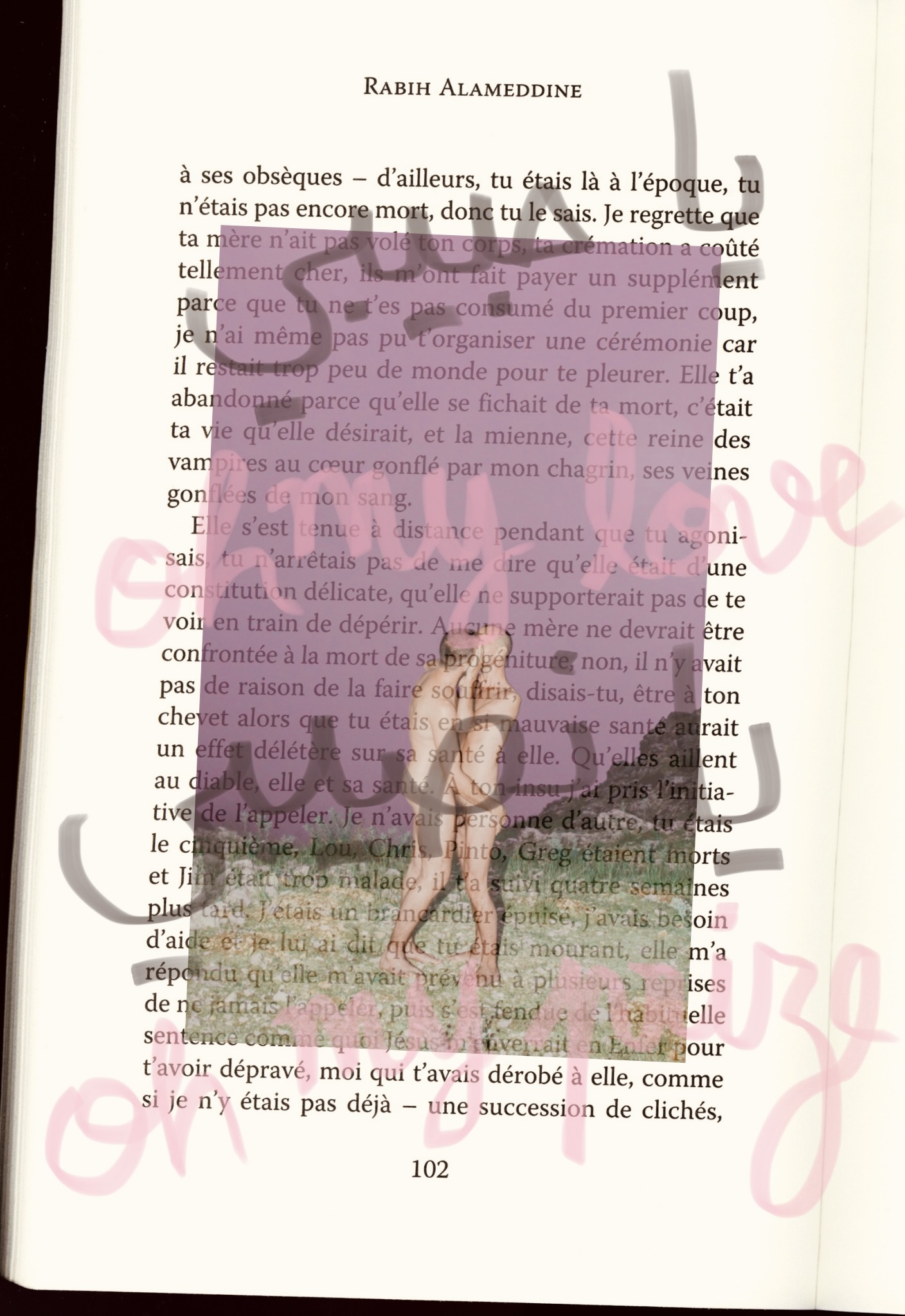

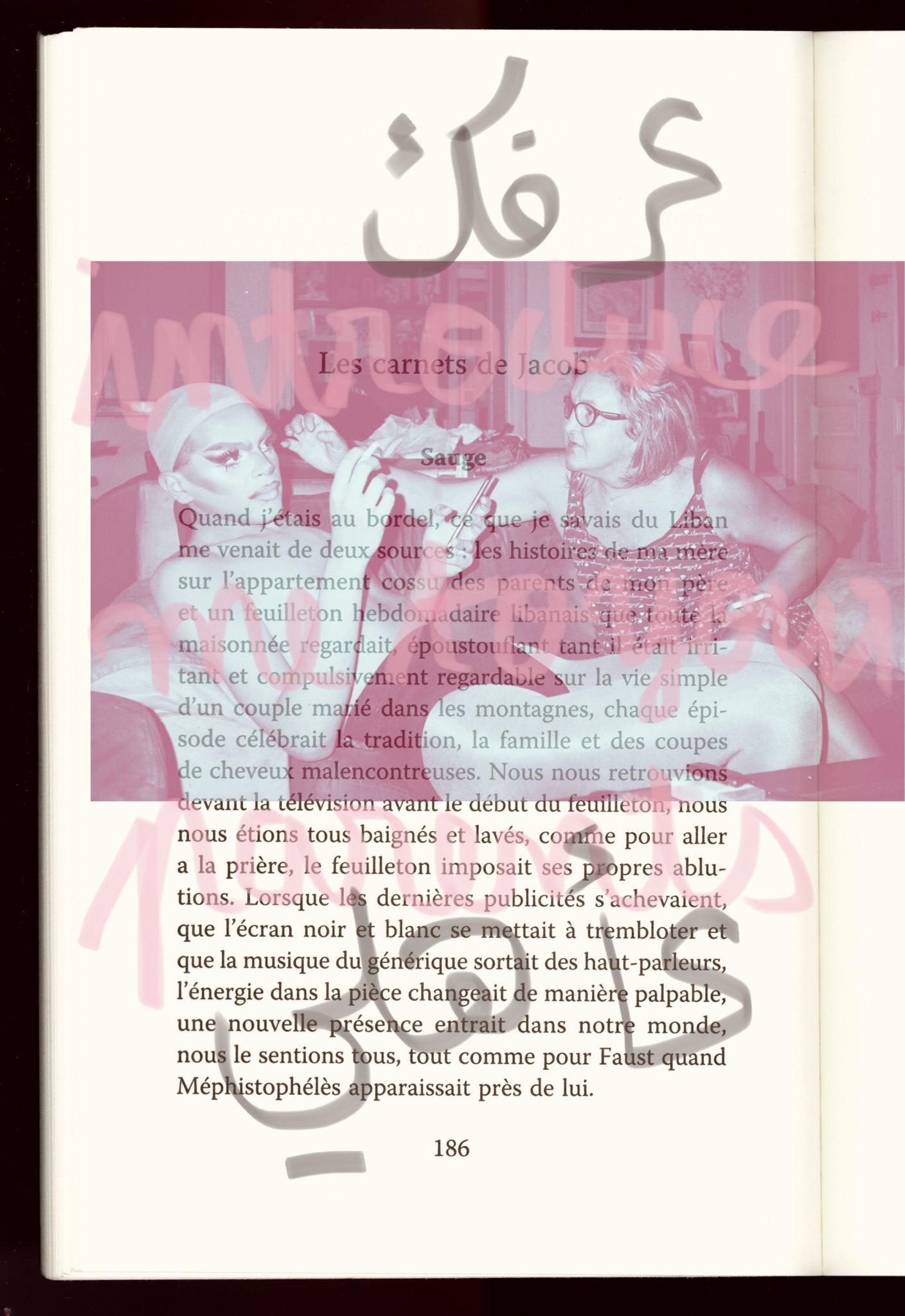
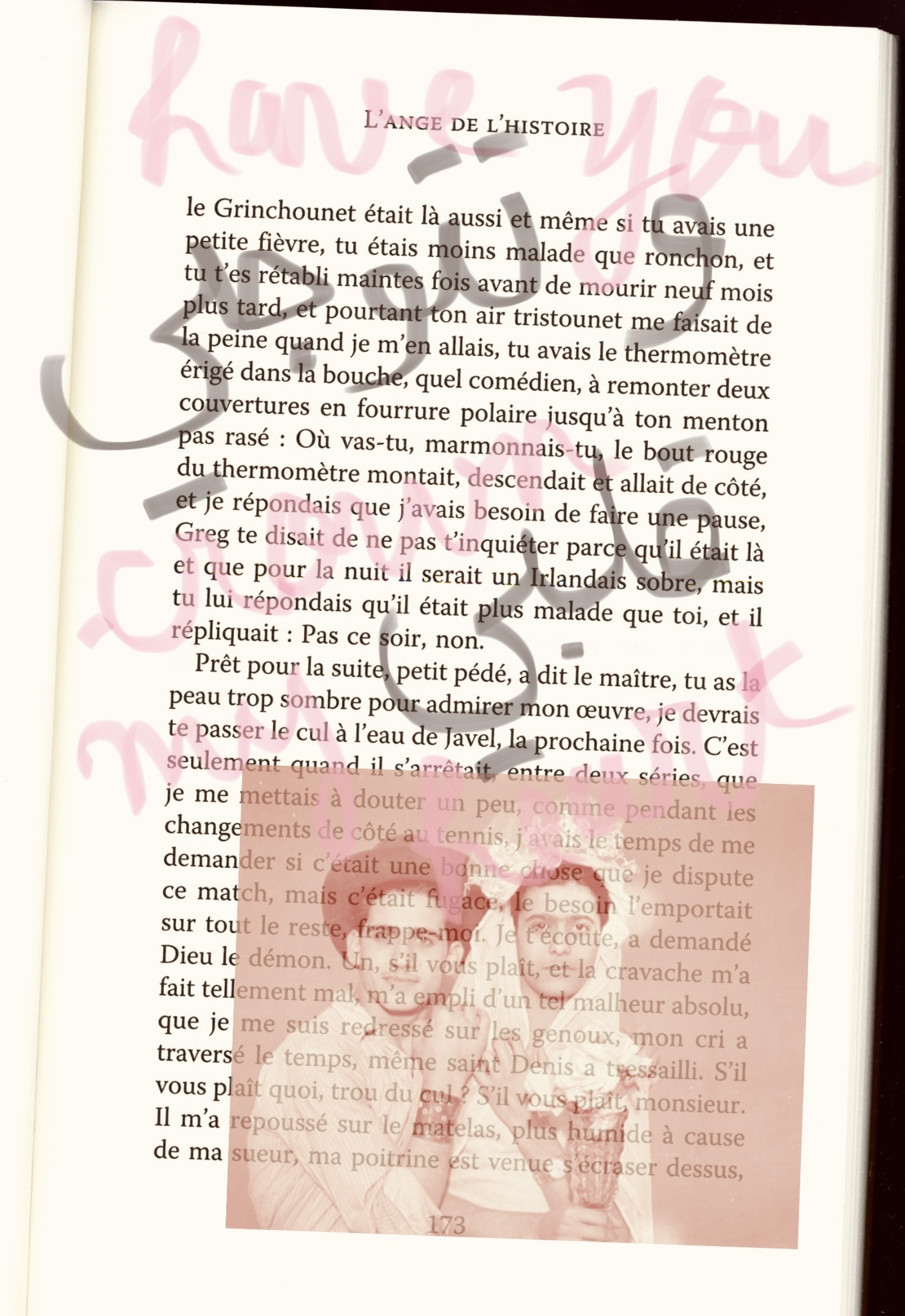
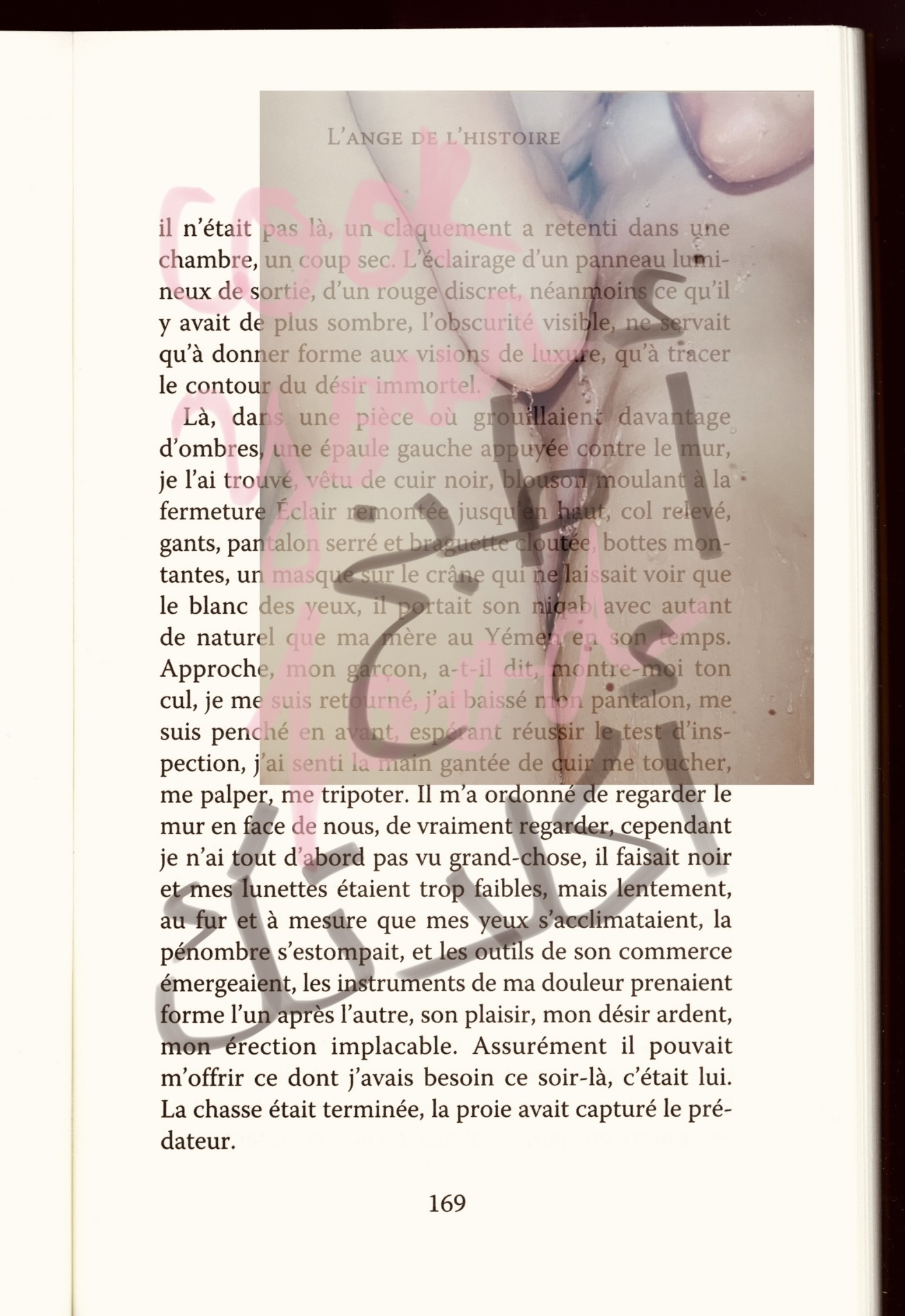


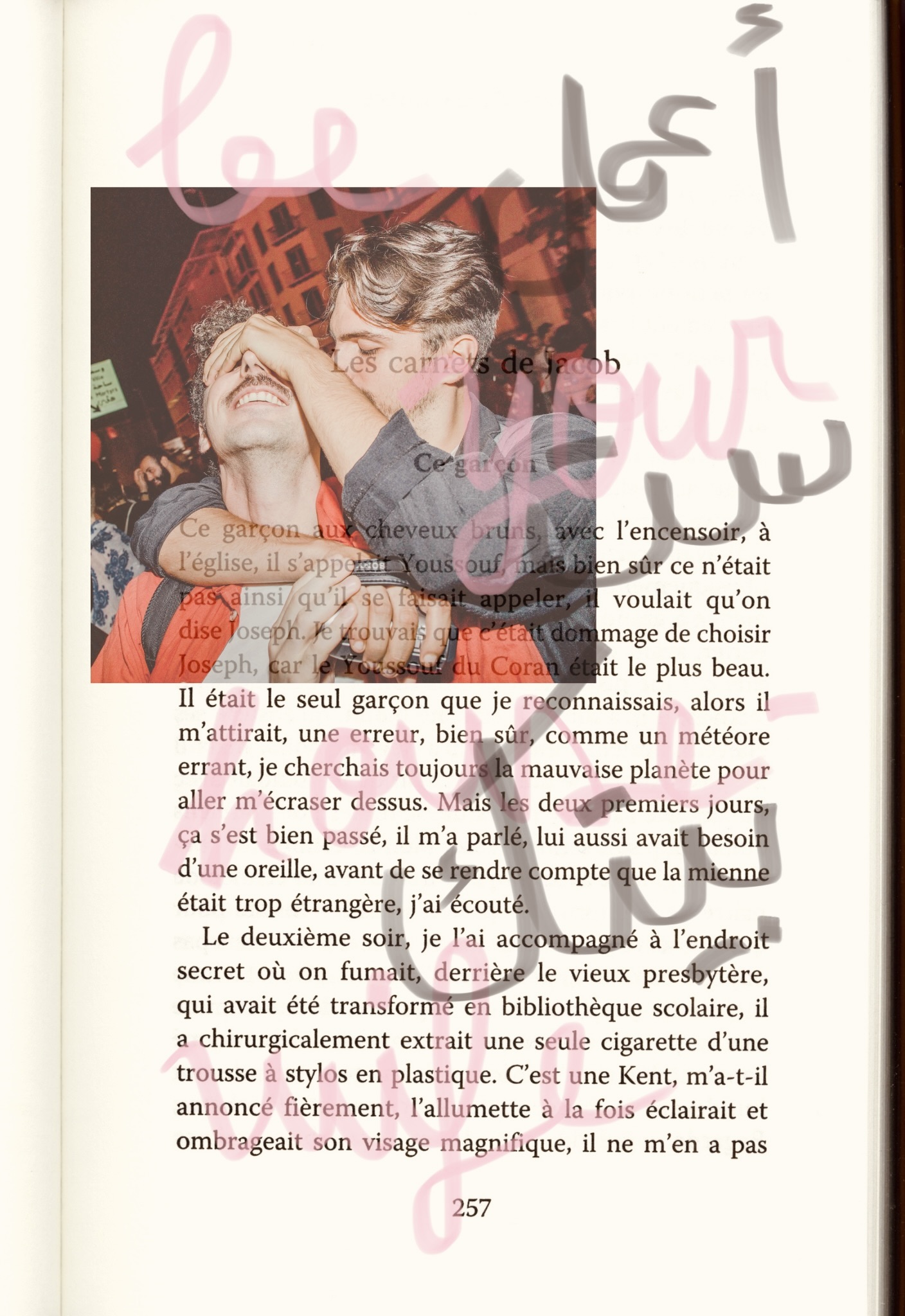
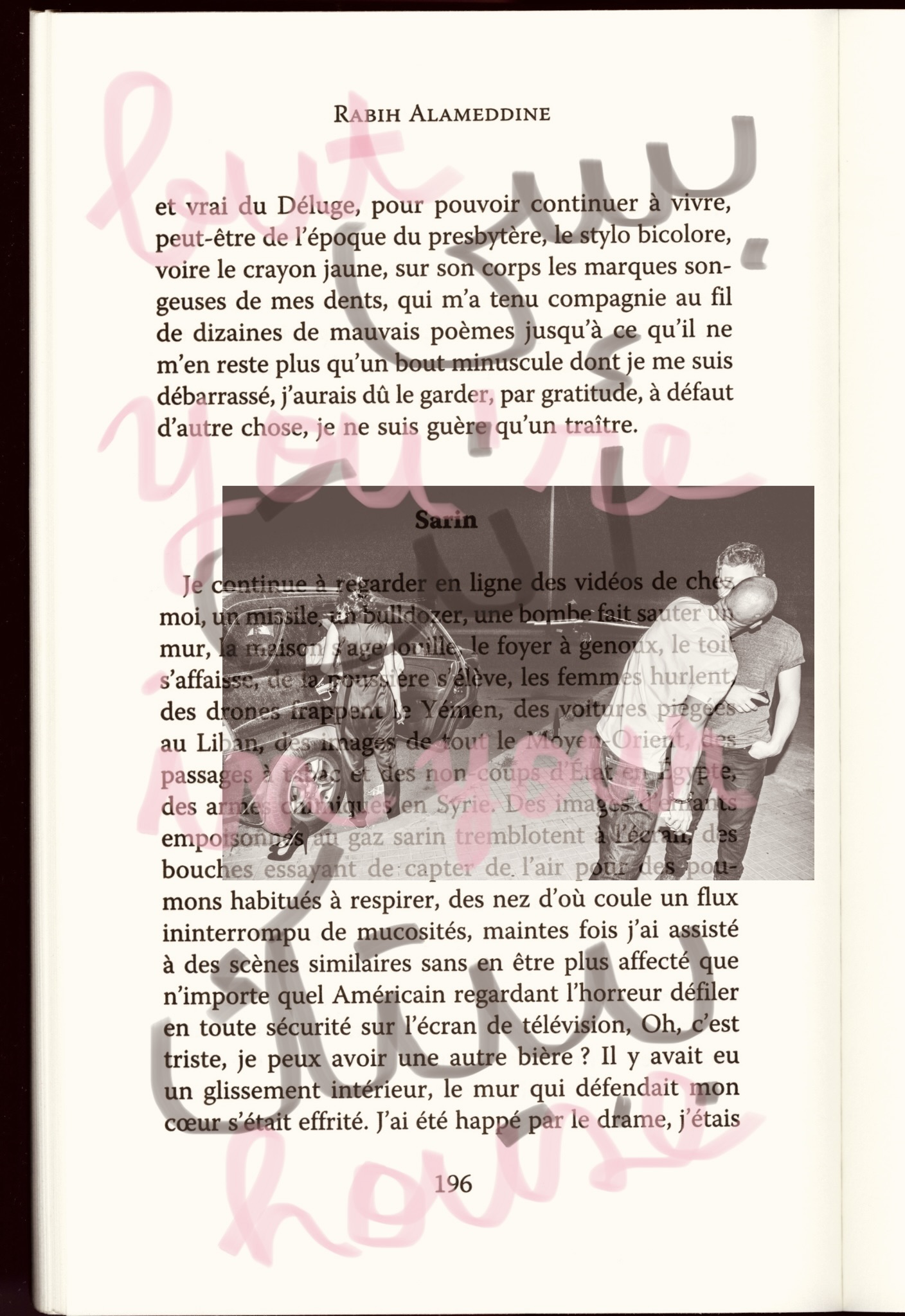
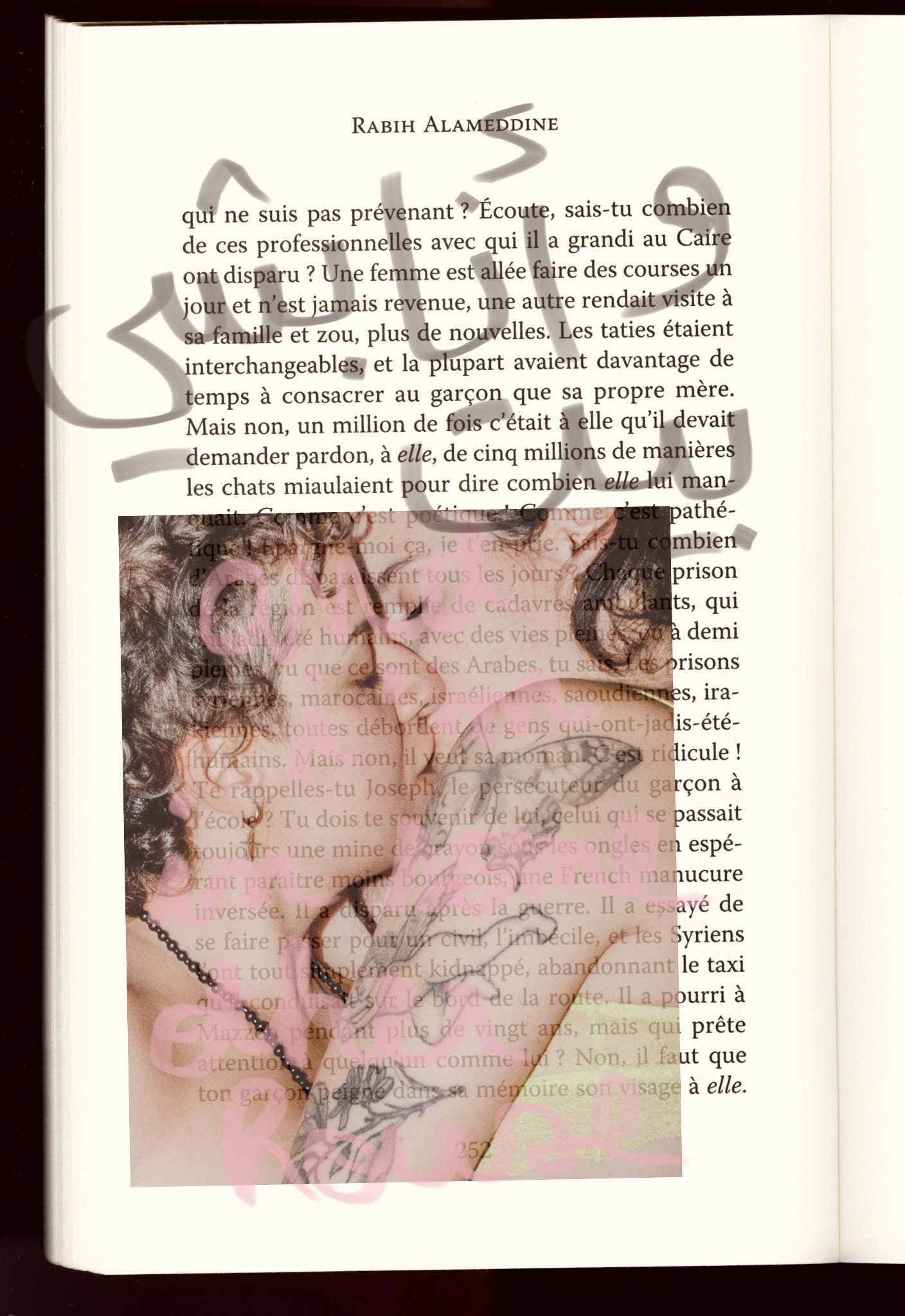


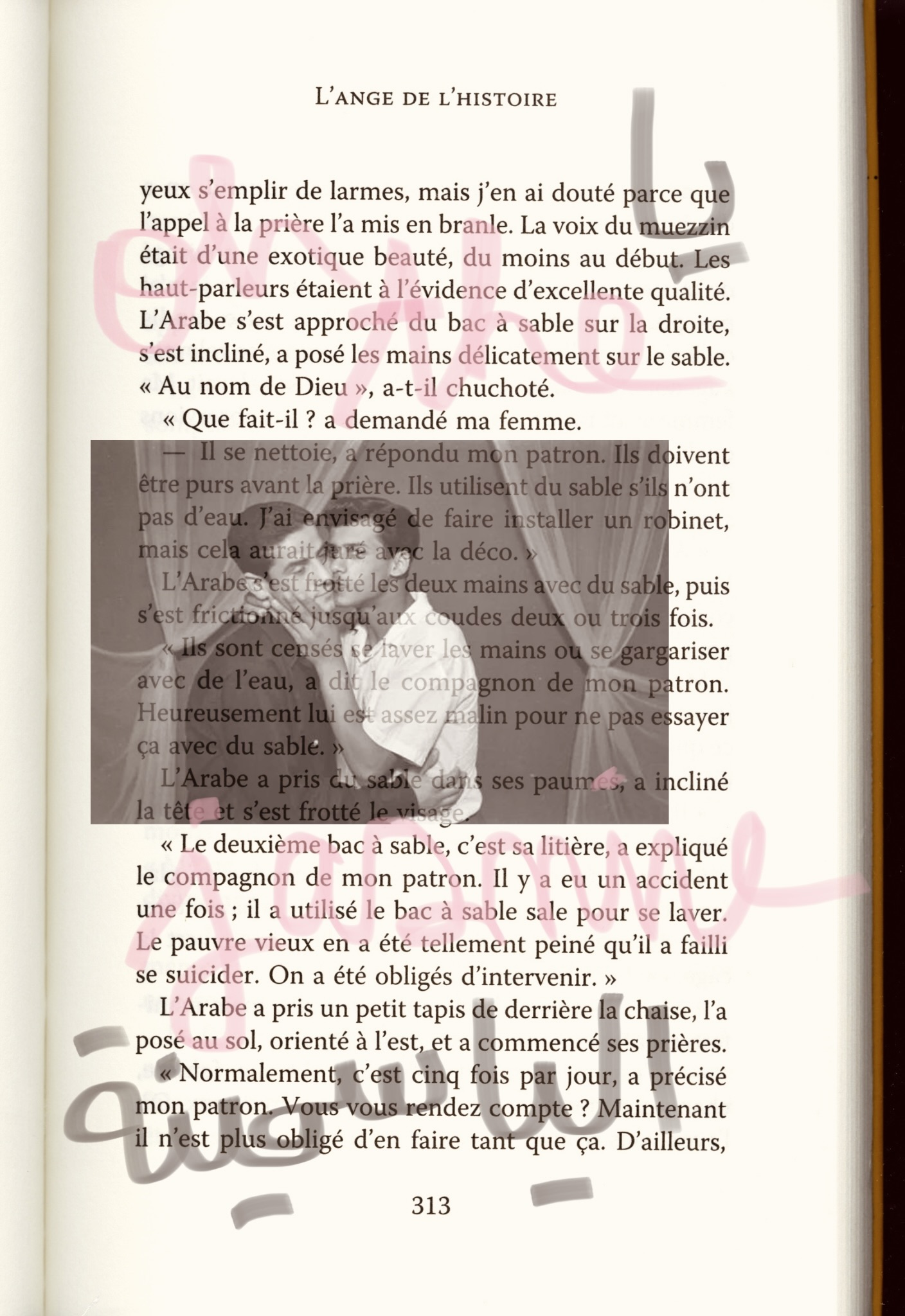
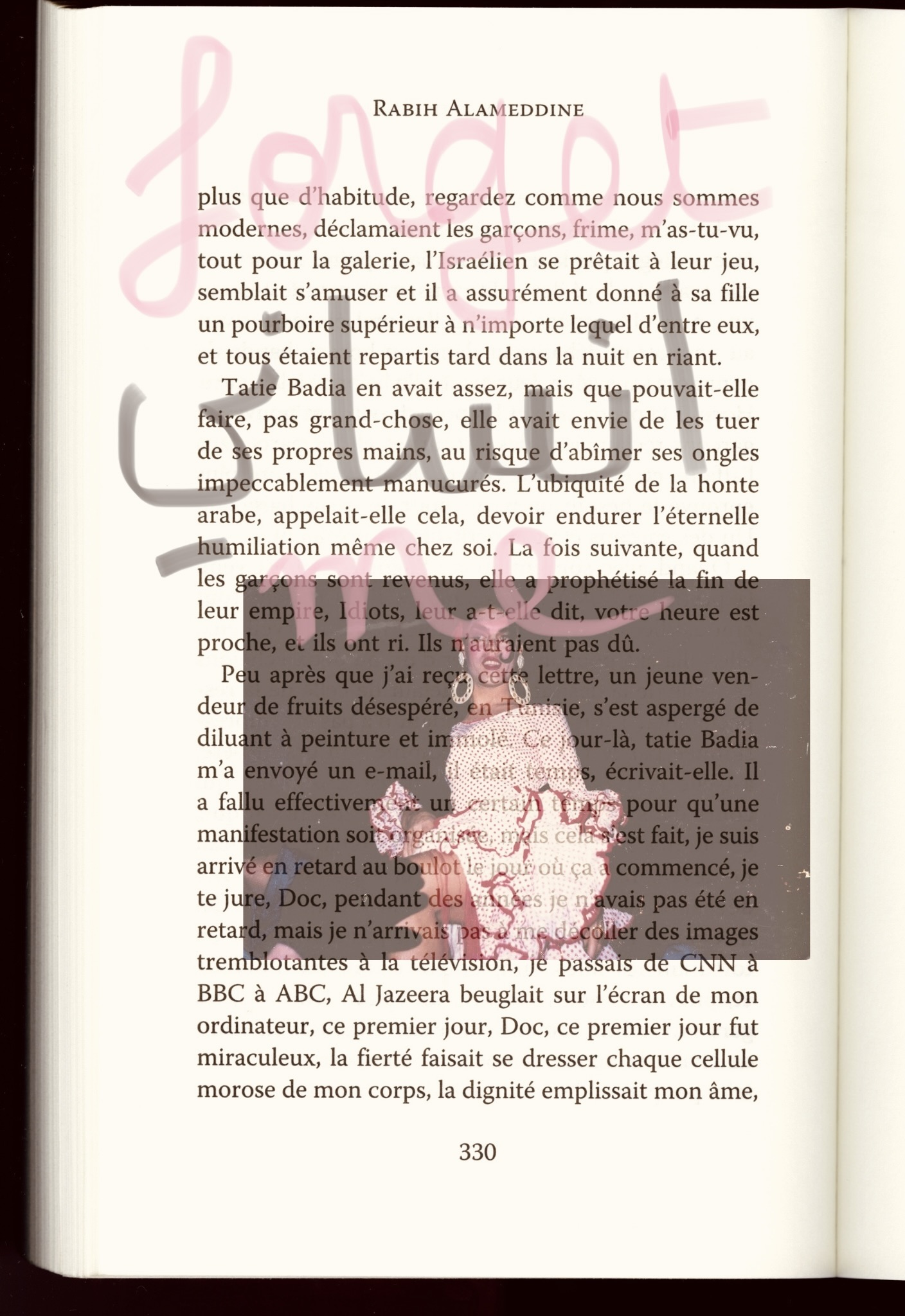

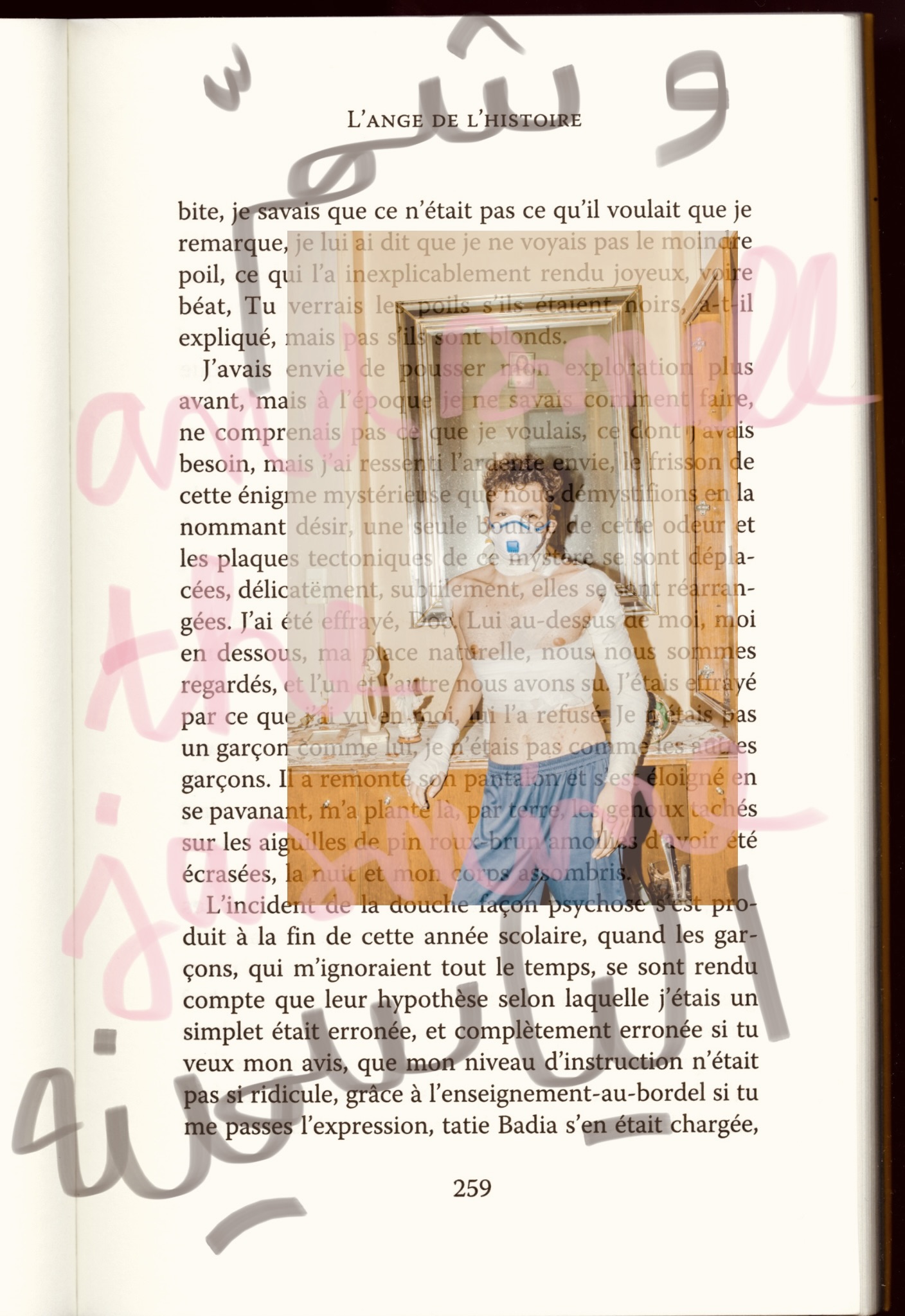
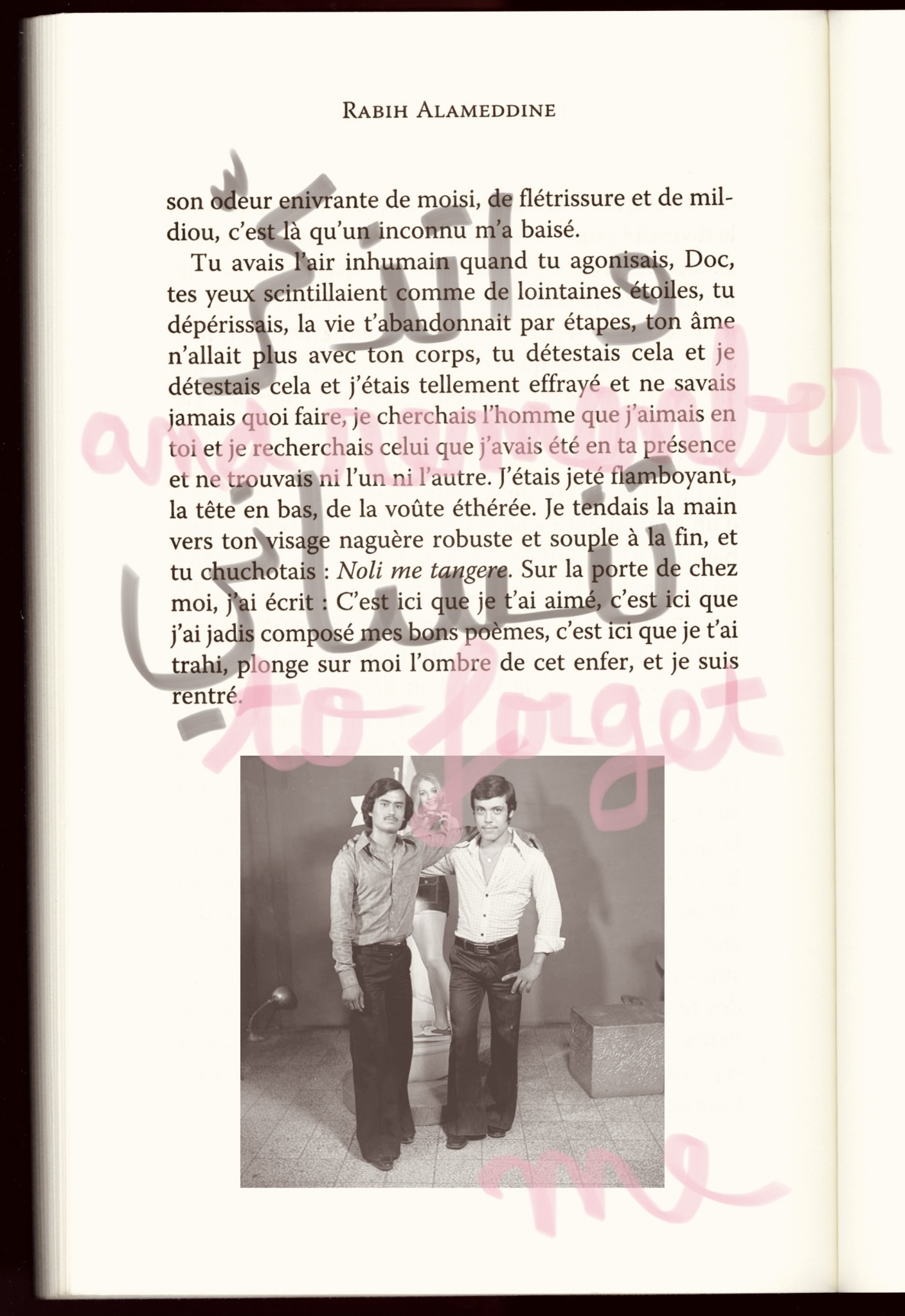
This project explores the profound human need for self-expression and memory preservation, especially within the Arab LGBTQ+ community. It combines sound, writing and drawing to highlight the existence of those who've made their mark on a specific time and place, using the concept of palimpsests. These layered creations become a visual and textual archive, bearing witness to diverse voices and the enduring power of human expression.
I scanned pages of Rabih Alameddine’s book The Angel of History, wrote down the lyrics to the song “Shim el Yasmine” by Mashrou’ Leila, and layered them with Arab queer imagery. I then printed each page on transparent paper, and put them together in a booklet, mimicking the superimposition of traces in traditional palimpsests, creating a contemporary and reimagined version of it.
The audio piece is composed of the song Shim el Yasmine, a text-to-speech translation of the lyrics, and excerpts from portrayals of the LGBTQ+ community in Lebanese media (see all visual and audio sources in the presentation slides).
Ultimately, it serves as a reminder of the Arab LGBTQ+ community's existence and the value of their stories, highlighting the indelible mark they leave on the world, one layer at a time.
I scanned pages of Rabih Alameddine’s book The Angel of History, wrote down the lyrics to the song “Shim el Yasmine” by Mashrou’ Leila, and layered them with Arab queer imagery. I then printed each page on transparent paper, and put them together in a booklet, mimicking the superimposition of traces in traditional palimpsests, creating a contemporary and reimagined version of it.
The audio piece is composed of the song Shim el Yasmine, a text-to-speech translation of the lyrics, and excerpts from portrayals of the LGBTQ+ community in Lebanese media (see all visual and audio sources in the presentation slides).
Ultimately, it serves as a reminder of the Arab LGBTQ+ community's existence and the value of their stories, highlighting the indelible mark they leave on the world, one layer at a time.
